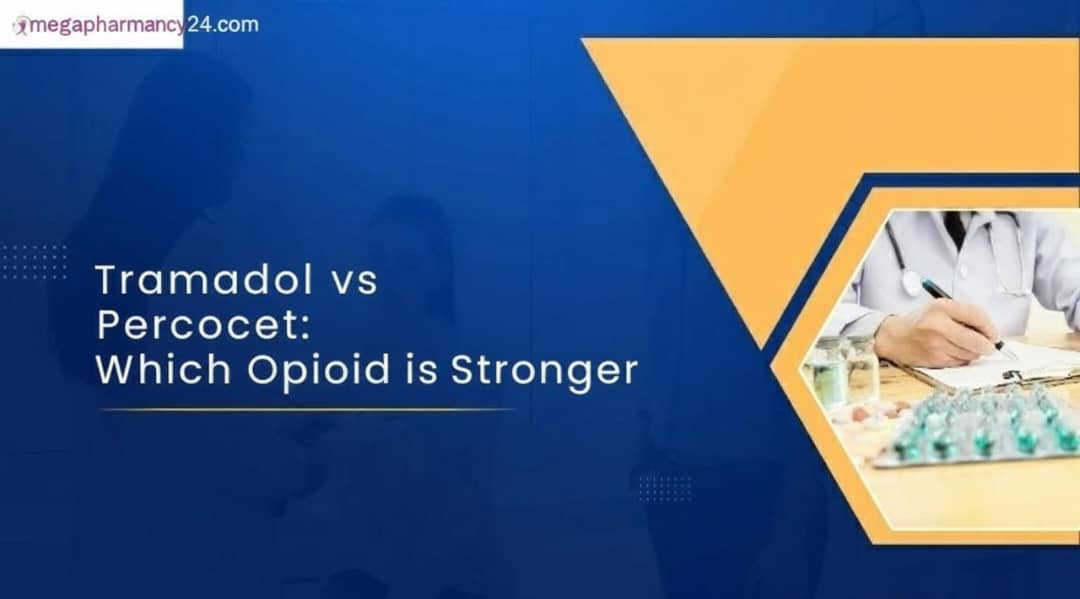Uncategorized
Tramadol vs Percocet: Which Opioid is Stronger?

Tramadol vs Percocet: Which opioids are best used to treat pain? Percocet contains oxycodone and is more potent than tramadol, so it requires a smaller dose to produce effects. Both Tramadol and Percocet are addictive and habit-forming. When taken illegally, it can produce both a sedated and euphoric high. Both drugs can cause addiction. Doctors do not prescribe either for long-term use.
Difference Between Tramadol and Percocet
What is Tramadol?
Tramadol is an opioid prescription pain medication with such other names as Ultram and ConZip, but there are generics as well. Some of the tramadol tablets release slowly within your body, offering relief for a prolonged duration. Others enter and leave your body a bit quicker, offering relief from acute pain. Like all painkillers, tramadol can also become addictive. If you use the drug long enough, you can be physically dependent on tramadol and will have intense tramadol withdrawal symptoms whenever you discontinue the medication. The symptoms are anxiety, sweating, insomnia, pain, nausea, shaking, and diarrhea. Long-term tramadol use isn’t always safe. Tramadol alters the way your body produces and breaks down serotonin — a chemical your body uses to regulate basic functions like your heartbeat.
Tamadol is an opioid analgesic with a central action, morphine-like structural similarity, and codeine-like and SNRI (serotonin/norepinephrine reuptake inhibitor). Tramadol is a Step 2 medication on the World Health Organization pain ladder and has an effect potency about 1/10th of morphine.
Researchers have also found that tramadol modulates various central nervous system pain modulators, non-neuronal inflammatory markers, and immune mediators. Because pain and inflammation involve diverse targets, it’s not surprising that evidence suggests tramadol effectively treats a range of pain conditions, including neuropathic pain and post-operative pain.
Tramadol spreads widely throughout the body, with a distribution volume of 2.6 to 2.9 liters per kilogram of body weight. It attaches strongly to body tissues. After taking it by mouth, the total volume it spreads to is about 306 liters, and about 203 liters when given by injection. Tramadol also enters the brain, reaching its highest levels there around 10 minutes after being taken by mouth. It can cross the placenta as well, with about 80% of the mother’s level also found in the baby’s blood.
What is Percocet?
Percocet comes under the brand name for the drug containing the narcotic oxycodone and acetaminophen. It is very addictive. They do have generic, however, though they’re usually called Percocet as well. Similar to other members of the same drug class, Percocet binds to opioid receptors in the brain to prevent the body from interpreting pain as well as release the hormone dopamine. Dopamine is an opiate-like pleasure hormone that controls the body’s pleasure response.
Doctors most frequently prescribe Percocet as a substitute for Tramadol to treat moderate to severe pain, since it is stronger than its counterpart, although it carries a higher risk of dependence and addiction. That is according to the current guidelines released by the Journal of Clinical Oncology.
Major Differences
The most significant difference between tramadol and Percocet is that tramadol is one of the lowest-strength opioids, while Percocet is a highly potent opioid drug. Potency is only one of the many significant differences between these drugs, however.
With that being said, let us examine how effective, chemically constructed, addictive, and expensive tramadol is compared to Percocet.
Tramadol vs. Percocet Effectiveness
Because of the variation in strength, Percocet is more powerful than tramadol as a pain reliever. In a study, it was discovered that Percocet is around eight times more powerful compared to tramadol. That is, when both are administered with the same dose, tramadol will be much weaker compared to Percocet. Yet, according to some studies, tramadol causes the same—and even better—pain relief as Percocet but with fewer side effects.
Tramadol vs Percocet side effects
Tramadol helps with pain that is moderate pain. It is, in fact, a weaker opioid. There are just two ways that it works now.
- Opioid receptors in the brain block pain via binding.
- It also helps to relieve pain by increasing serotonin and norepinephrine levels.
Common side effects include:
- Drowsiness
- Dizziness
- Nausea
- Constipation
- Headache or sweating
Tramadol does have its risks, including each of these serious risks.
- They may occur especially at high doses or if people happen to have seizure disorders.
- Serotonin syndrome occurs, especially when someone uses antidepressants.
For cases of moderate to severe pain, Percocet is known as a stronger opioid. It contains two active ingredients.
- Oxycodone (an opioid of power)
- Acetaminophen: a pain reliever of the non-opioid type.
It works by:
- Binding to those mu-opioid receptors does help block pain signals. This occurs within the brain and spinal cord.
Common side effects of Percocet include:
- Drowsiness
- Nausea
Serious risks include:
- Addiction and dependence
- Breathing problems
In summary, Percocet helps with severe pain more yet has higher side effects and dependency risks, while tramadol treats milder pain and poses a lower addiction risk.
